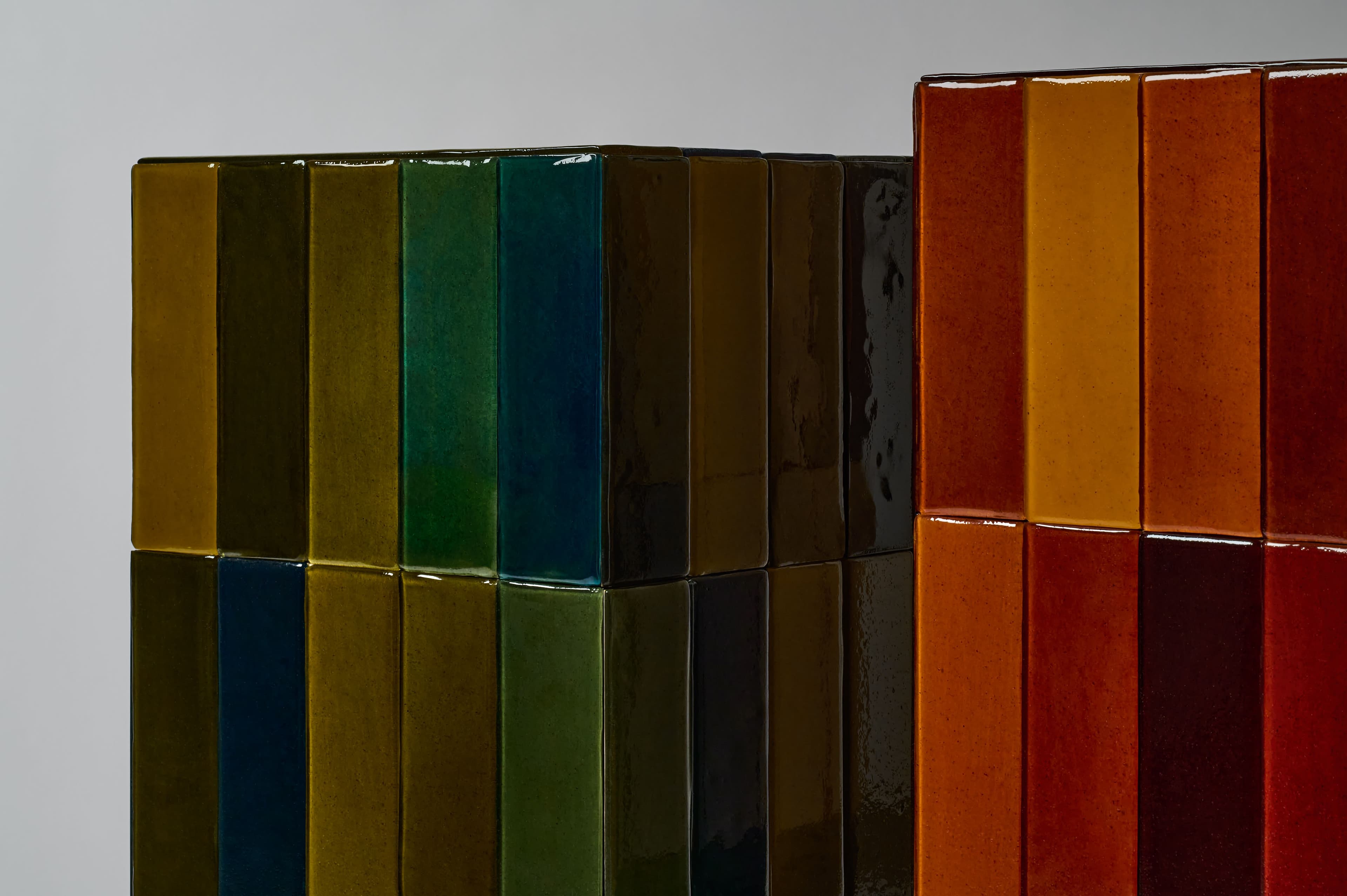1. The SO-Colored project explores the potential of micro-algae as a natural coloring agent. Could you elaborate on how algae's natural color variations influence the aesthetic of the materials you create?
When people think of algae, they often imagine the color green. However, the color range of microalgae is remarkably broad. Even within the greens, there is a rich variety of shades, and depending on the species and growing conditions, microalgae can also exhibit vibrant blues, yellows, and reds. By blending them with natural resin, it is possible to preserve the vividness inherent to microalgae. This results in a material that stands apart from other naturally derived materials, which tend to have more subdued tones. At the same time, it also possesses a subtle fluctuation—a kind of organic irregularity—not found in synthetically produced colors. This combination of vividness and gentle fluctuation is what makes this material so compelling.
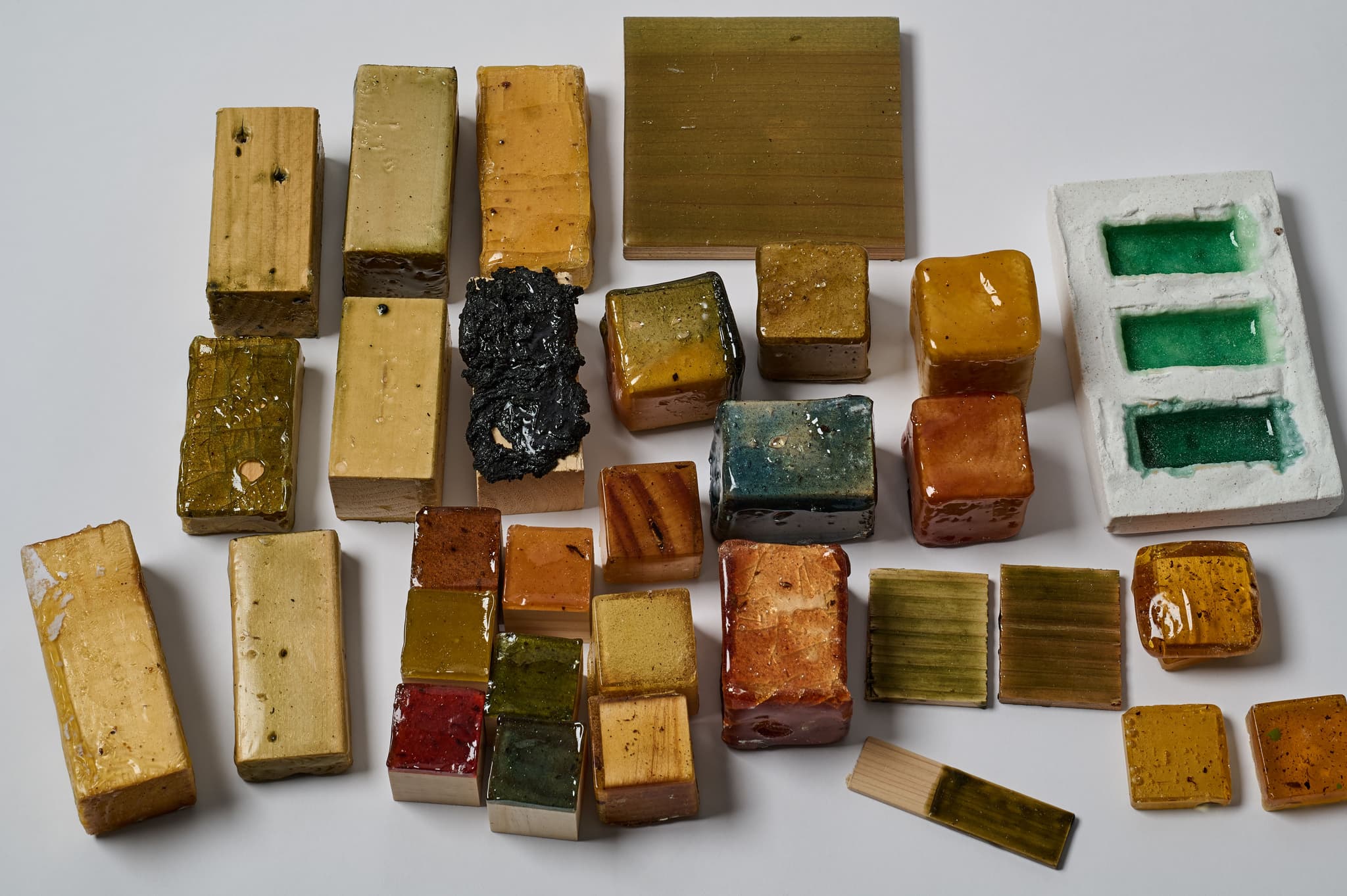
2. Micro-algae has many functional applications, such as CO2 absorption and energy production. What made you focus specifically on its use for coloring materials, and what challenges did you face in the material research phase?
Among the various possibilities explored by Algal Bio Co., Ltd.—a company engaged in the research and development of microalgae—the presence of microalgae powder stood out. While they were seeking potential applications for it, we as designers saw its potential to become a new kind of natural pigment, which led us to pursue further research. During the research phase, the biggest challenge we encountered was maintaining color stability due to the nature of natural pigments, which are sensitive to environmental factors such as UV light and humidity. Through repeated material experiments—including applying it to paper and wood, and mixing it with soil or glass for firing—we discovered that coating it with resin allowed the color to be preserved for a much longer time.

3. SO-Colored relies on algae powder mixed with natural resins. Could you describe the specific properties of the resins used and how they complement the algae powder to create a durable, high-performance material?
We use dammar resin, a natural resin that is relatively transparent, has a moderately low melting point, and hardens at room temperature. By mixing it with the pigment, we are able to preserve the color for an extended period. However, because it is vulnerable to external impact, further improvement is needed.
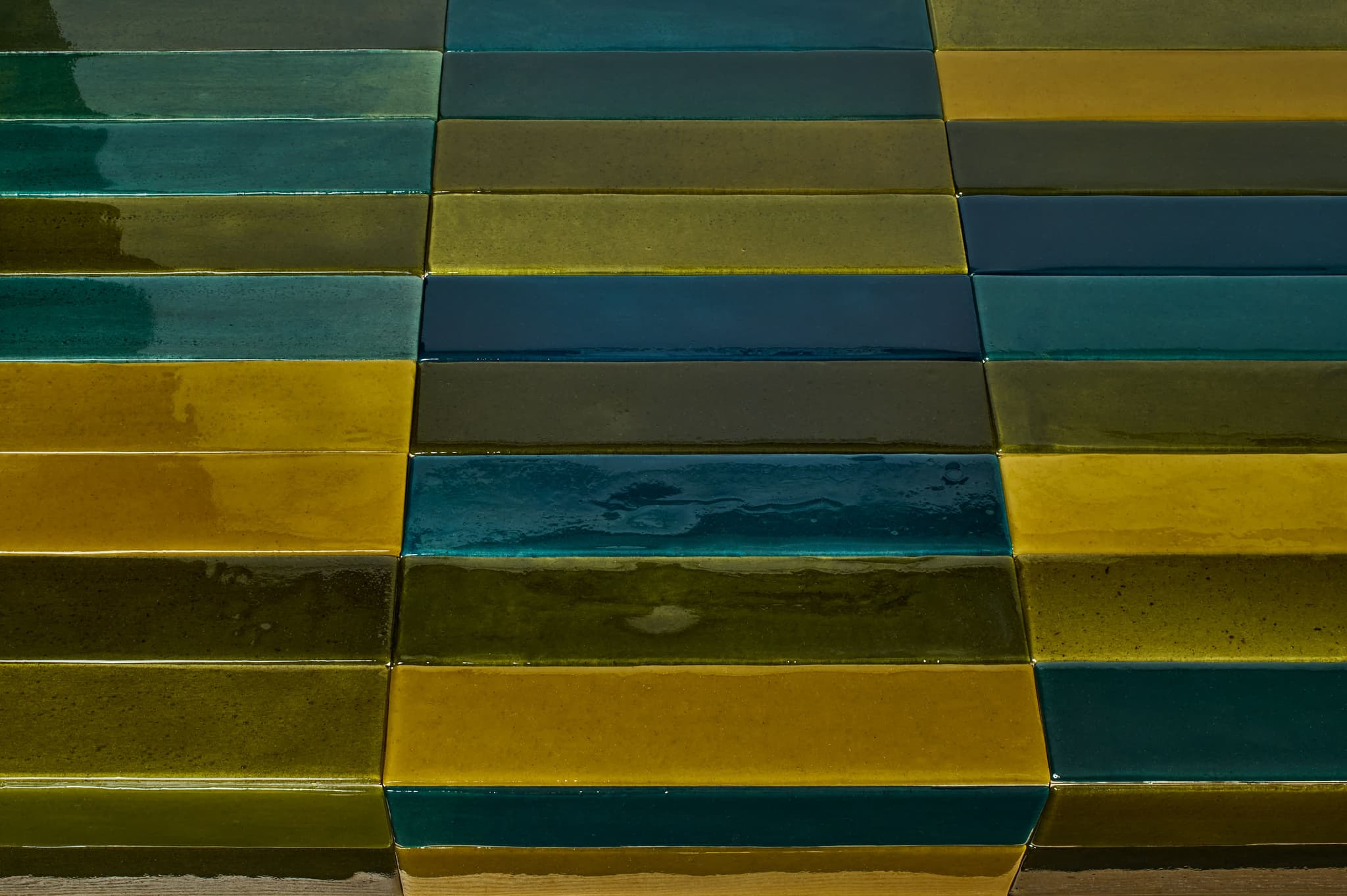
4. Given the growing interest in sustainability, how do you see the potential of algae-based pigments as a viable alternative to synthetic dyes in industries like fashion or interior design?
The emergence of algae-based pigments as a new option will likely have a positive impact on the fashion and interior design industries. From a sustainability perspective, it’s important to consider not only the pigments themselves but also the resources used alongside them and the energy involved in transportation. When viewed comprehensively, this encourages designers and companies to choose the right pigments for the right applications.
5. The concept of using algae as a raw material for color production is quite novel. What steps did you take to ensure that the algae cultivation process is environmentally responsible and scalable for mass production?
The cultivation of microalgae is carried out by Algal Bio Co., Ltd. Algae have an extremely fast growth rate, making them more productive than conventional crops. They can be grown using compact, controlled cultivation systems that do not require farmland and are not affected by weather or external environmental conditions, allowing for stable and consistent production. Additionally, since algae absorb carbon dioxide and convert it into organic matter, they are also attracting attention from a carbon-neutral perspective.
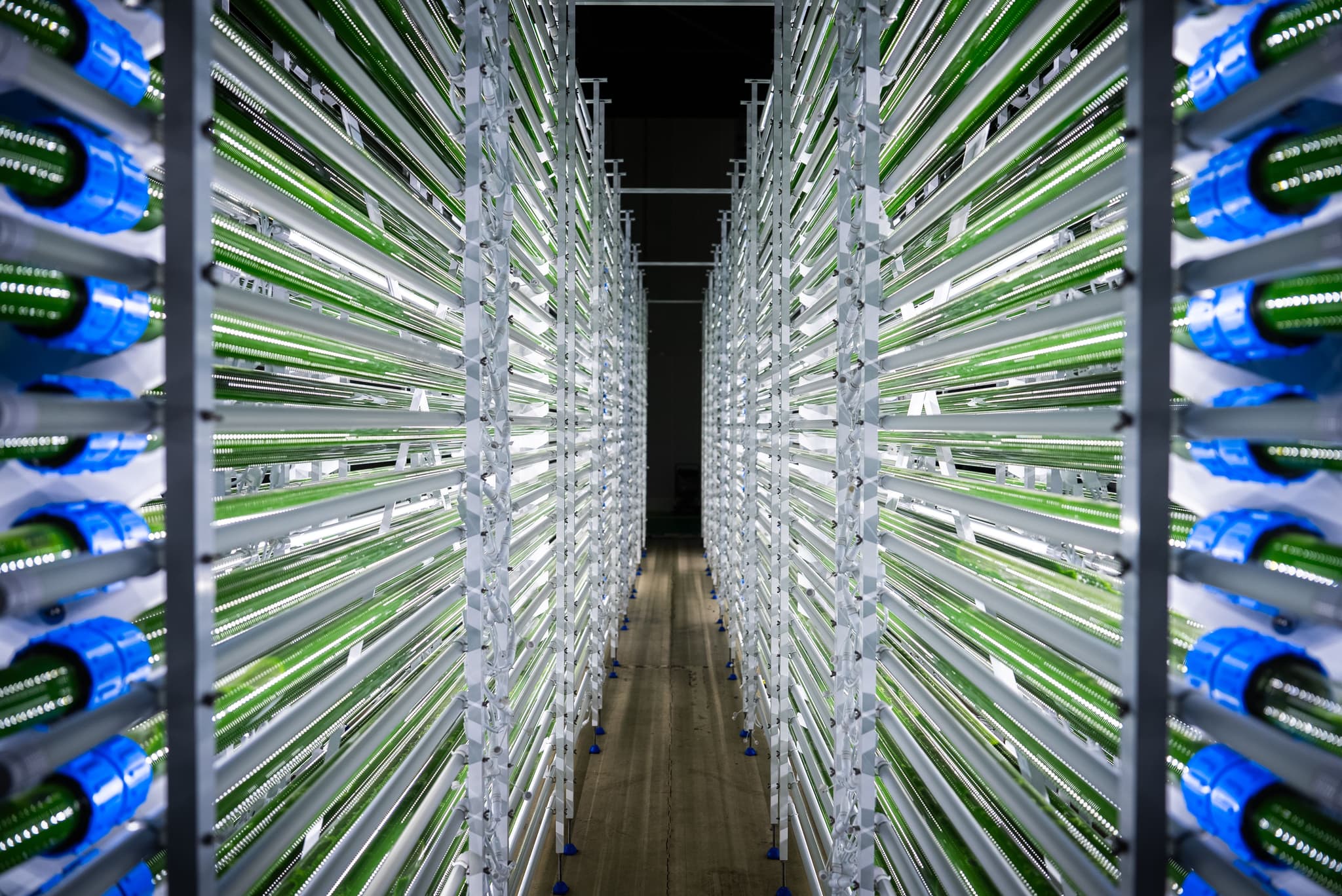
6. SO-Colored is a collaboration with Algal Bio Co., Ltd. How does this partnership influence the material’s development process, and what specific innovations have emerged from the collaboration?
Algal Bio Co., Ltd. conducts fundamental research on microalgae, while we+, from a designer’s perspective, explores the potential for integrating the powders they’ve developed with resins and other materials for real-world applications. Through this collaboration, a more effective path toward social implementation can be expected.
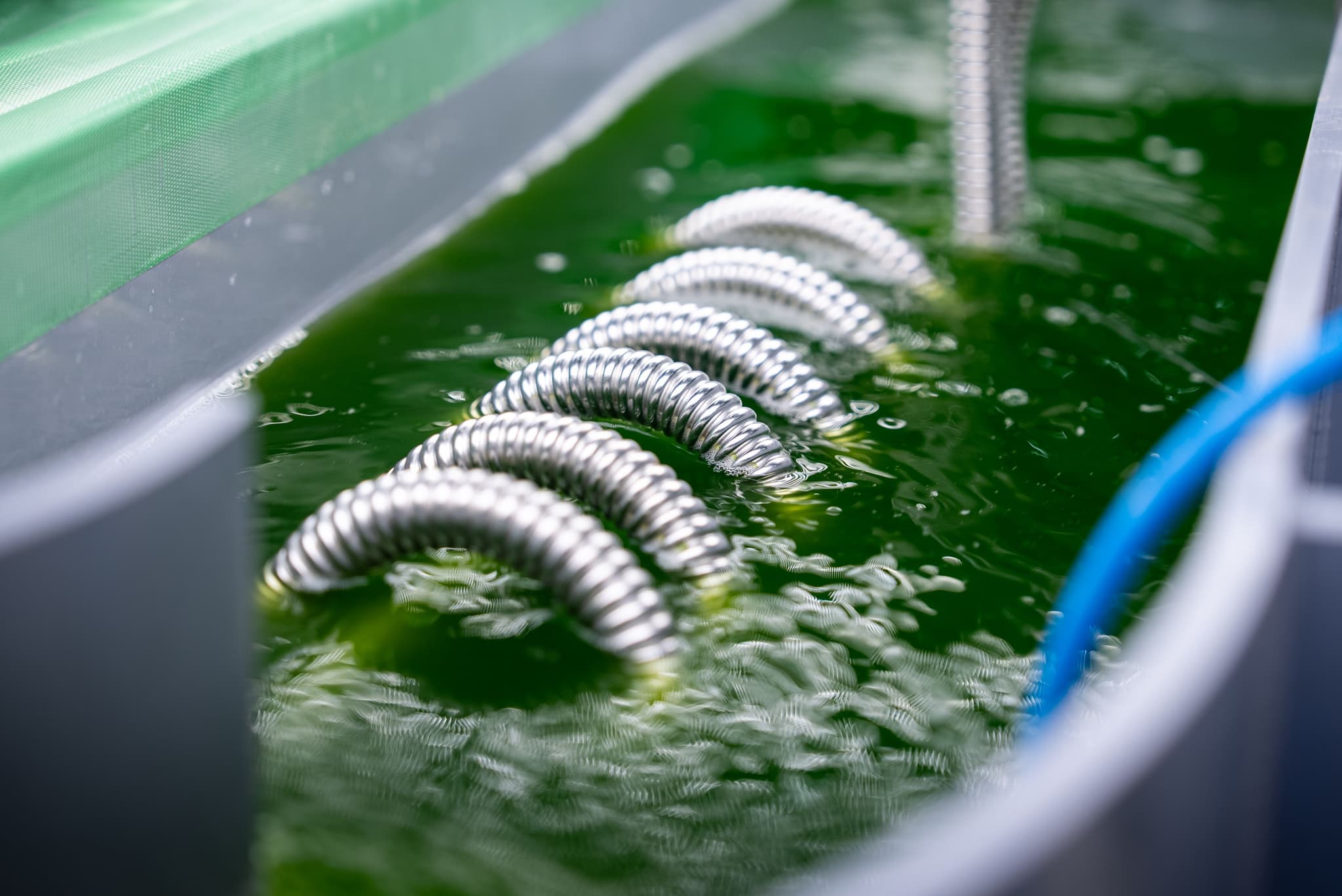
7. The project highlights a commitment to ecological care in contemporary design. Could you explain how SO-Colored fits into the larger framework of we+'s ethos of blending natural materials with innovative design for environmental benefit?
In modern society, the pursuit of convenience and efficiency has often gone too far, leading to an inappropriate relationship between materials and humans. At we+, our concept is to offer alternative perspectives and choices to such a society. The environmental impact of dyes and pigments used in the interior and fashion industries is one example of this deteriorating material-human relationship. With SO-Colored, we hope to present an alternative option that addresses these complex issues of contemporary society.
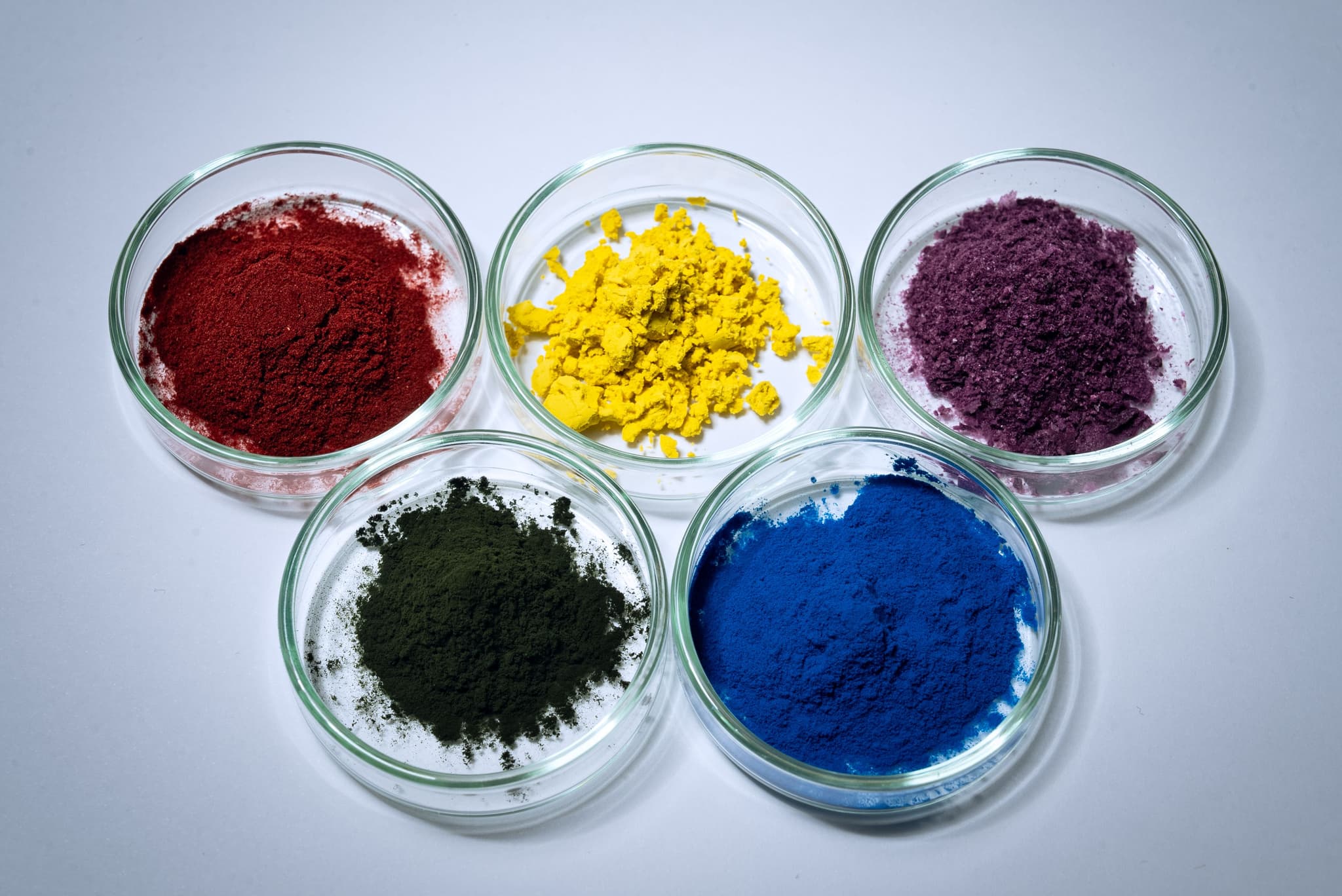
8. Algae can also be used in functional applications, such as biofuels or pharmaceuticals. Do you foresee any crossover between the SO-Colored project and other sectors exploring algae’s potential, and if so, how?
The SO-Colored project explores the potential of microalgae as a natural pigment. While microalgae also hold promise in other contexts—such as biofuels or functional compounds—those applications fall outside the scope of SO-Colored and belong to entirely different project frameworks.
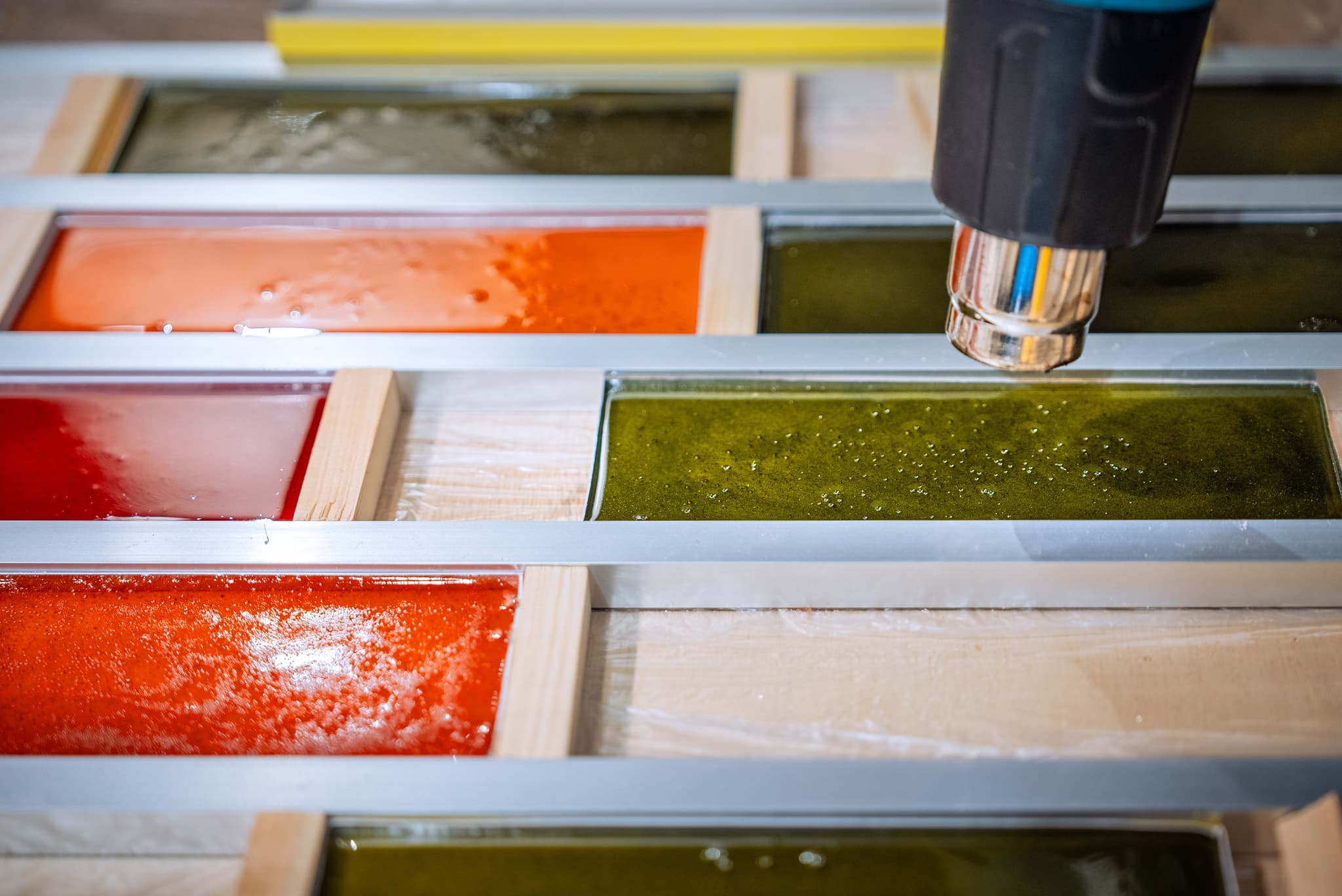
9. Looking forward, what are your aspirations for the future of algae-based materials, and do you envision this material evolving into a broader range of applications beyond furniture design?
We believe that algae-based materials hold a wide range of possibilities beyond just microalgae-derived powders. In particular, we are highly interested in the potential for algae-derived components to serve as alternatives to synthetically developed materials. While they are already being used in functional foods, there is significant potential for their application beyond furniture design as well.
